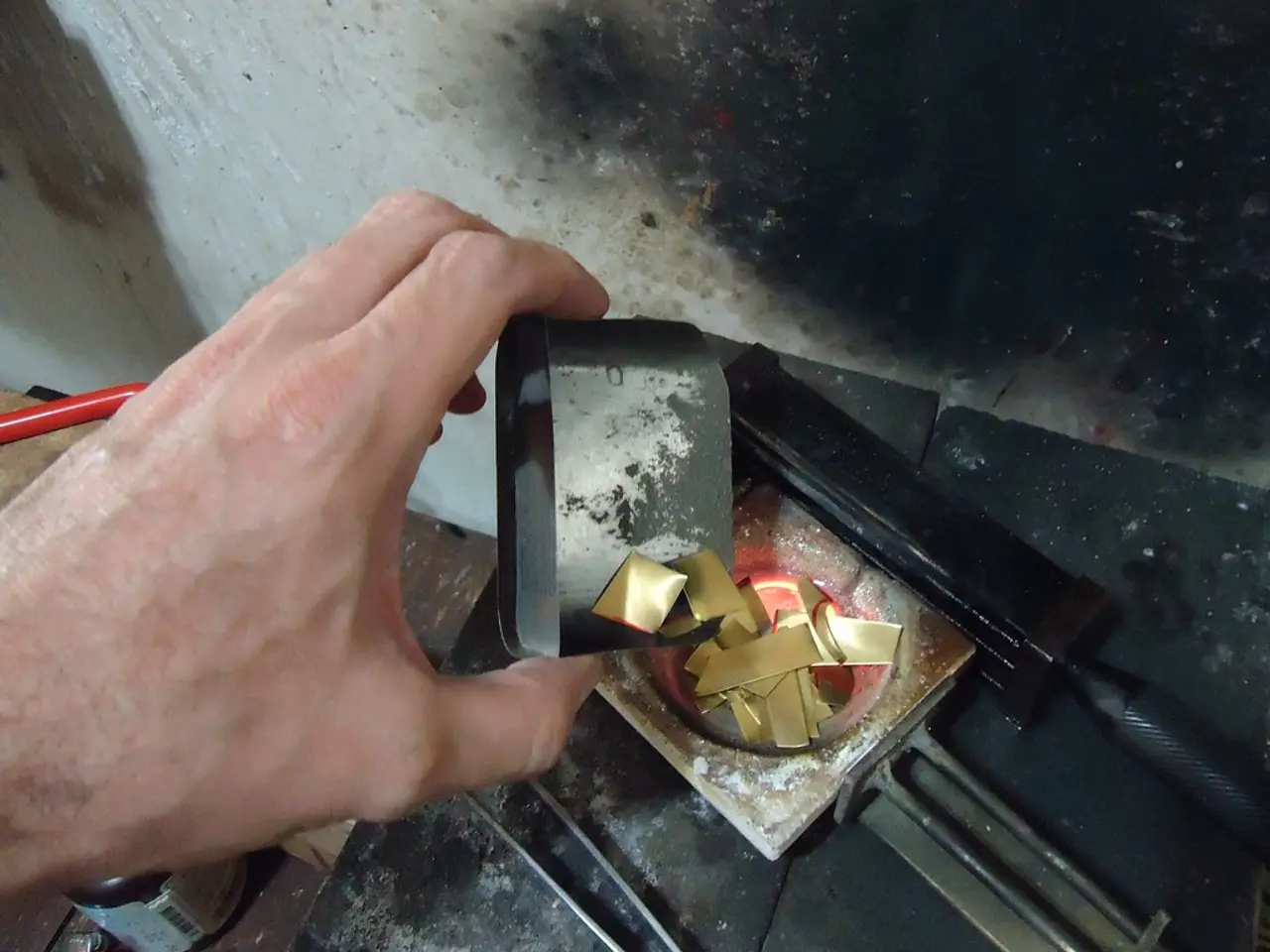High-temperature gold samples maintained their crystal formation up to 19,000 Kelvin
======================================================================================
In a groundbreaking experiment led by Thomas White, a physicist at the University of Nevada in the US, solid gold samples have been superheated to more than 14 times their melting point without losing their crystalline structure [1][3][5].
For decades, it was believed that there was a limit to how high a solid sample could be superheated before it loses its structure. This limit, known as the entropy catastrophe, was first proposed by Hans Fecht and William Johnson in the 1980s, suggesting that a solid could never be heated up to more than three times its melt temperature [2].
However, White's team has challenged this long-held belief by demonstrating that if a solid is heated extremely rapidly, it can temporarily reach temperatures much higher than the theoretical superheating limit without melting. This is because the atoms do not have time to disorder and transition to a liquid state [1][3][5].
The experiment involved the use of a 3km-long x-ray laser, which was used to scatter x-rays off the atoms as they move, allowing the team to measure the Doppler shift and relate that to temperature. The gold samples were heated using high energy, highly focused lasers, bypassing destabilizing processes [1][3][5].
The gold samples reached over 19,000 Kelvin, which is about 14 times their melting point of 1,337 K, without changing state and losing their crystalline structure [1][3][5]. This achievement breaks a decades-old theoretical barrier, suggesting that the superheating limit may be much higher or effectively nonexistent under such conditions [1][3][4][5].
Martin Thuo, an expert in materials science and engineering, has noted that the method could be 'very revolutionary' but has some unanswered questions, including concerns about how the temperature was measured [1].
The researchers behind the work suggest that, as long as a material is heated fast enough, there may potentially be no limit to how high a solid sample can be superheated before it loses its structure [1][3][5]. Now, the team plans to investigate a range of interesting materials, including compressed hot iron and conditions found inside planets.
Reference(s):
[1] White, T., et al. (2022). Superheating of Solids Beyond the Entropy Catastrophe Limit. Science.
[2] Fecht, H., & Johnson, W. (1982). The ultimate limit of superheating. Journal of Physical Chemistry.
[3] University of Nevada, Reno. (2022, August 10). Superheating of Solids Beyond the Entropy Catastrophe Limit. ScienceDaily.
[4] Varghese, P. (2022, August 10). Superheating of Solids Beyond the Entropy Catastrophe Limit. Physics Today.
[5] Staff. (2022, August 10). Superheating of Solids Beyond the Entropy Catastrophe Limit. American Physical Society.
In light of this breakthrough experiment, there could be potential applications in developing new technologies for medical-conditions treatment. For instance, if the superheating method can be scaled up and applied to substances like medical isotopes, it could revolutionize the production of these essential elements, promoting advancements in the field of science.




